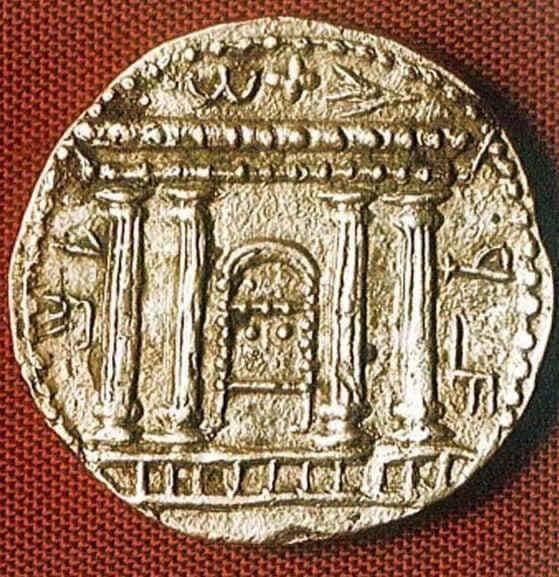ARCHAEOLOGY AND THE BIBLE – KING HEROD’S TEMPLE
A simple coin gives us the image of King Herod’s Jerusalem Temple that we read of in the Gospels. The sela or tetradrachm features what may be the most accurate representation of the Jerusalem Temple that was destroyed by the Romans in A.D. 70. The Coin depicts the entrance of the Temple in Jerusalem with the Ark of the Covenant inside , surmounted by a star with inscription in Paleo-Hebrew.
This coin was issued when part of the Jewish population in Judea revolted against Roman rule, in AD 132, under the leadership of a man named Simon ben Kosiba. He was thought by Jews of the time to be the promised ‘Messiah of Israel’, and was given the surname Bar Kokhba, ‘Son of a Star’, as fulfilment of a prophecy: ‘there shall come a Star out of Jacob, and a Sceptre shall rise out of Israel’ (Numbers 24:17). In AD 135 Bar Kokhba was defeated, and the Roman emperor Hadrian expelled Jews from Jerusalem.
The tetradrachm was made by overstriking a Roman coin. It is possible to see traces of the portrait of the Roman emperor Trajan (r. AD 98–117) on the reverse. The legends on the coin are in Hebrew. The coin depicts the Temple of Jerusalem, which was destroyed by the Romans during the first Jewish revolt in AD 70. The reverse represents the palm branches (lulav) and a citrus (etrog) used for the feast of Tabernacles (Sukkot), during which the Jews were commanded to make a pilgrimage to the Temple (following Leviticus 23:40).
Thanks to Archeologist Esther Lovato for this research.

Keep In Touch